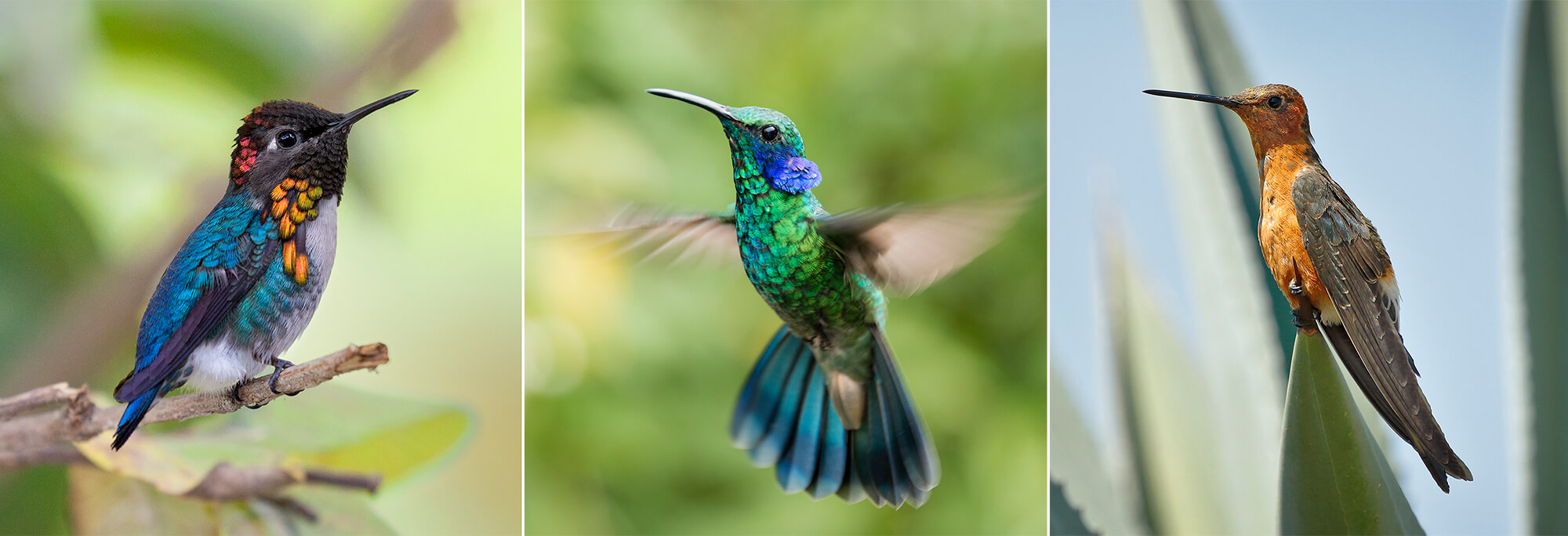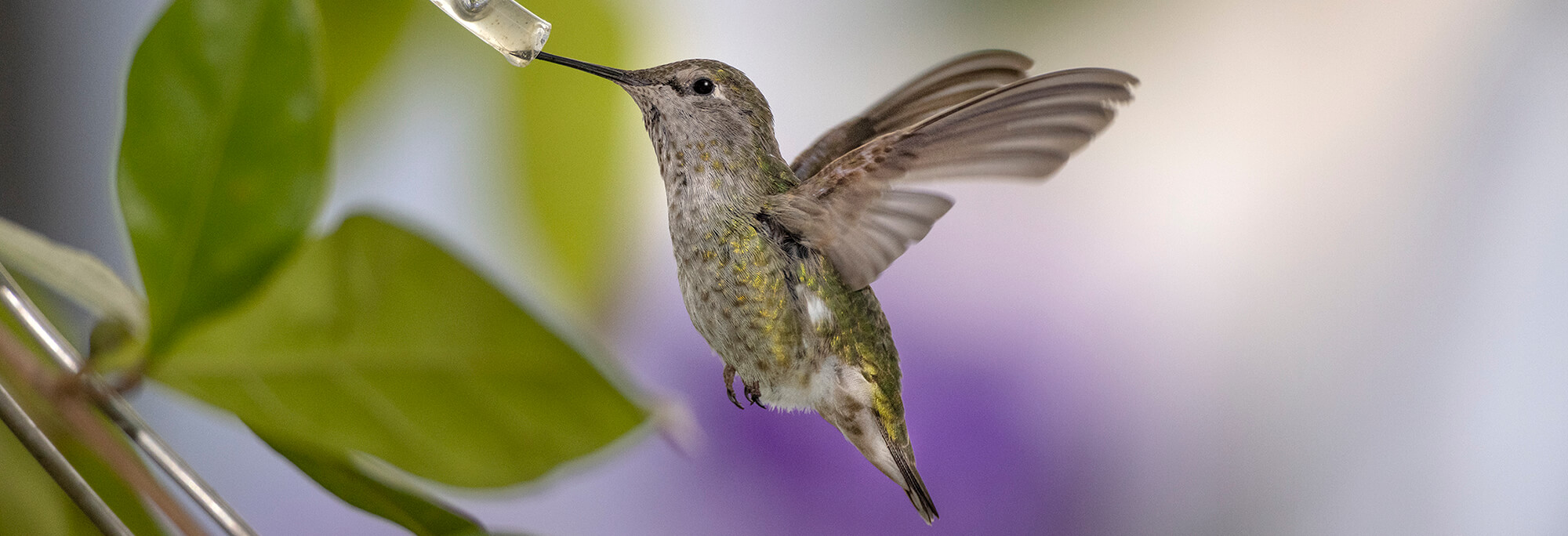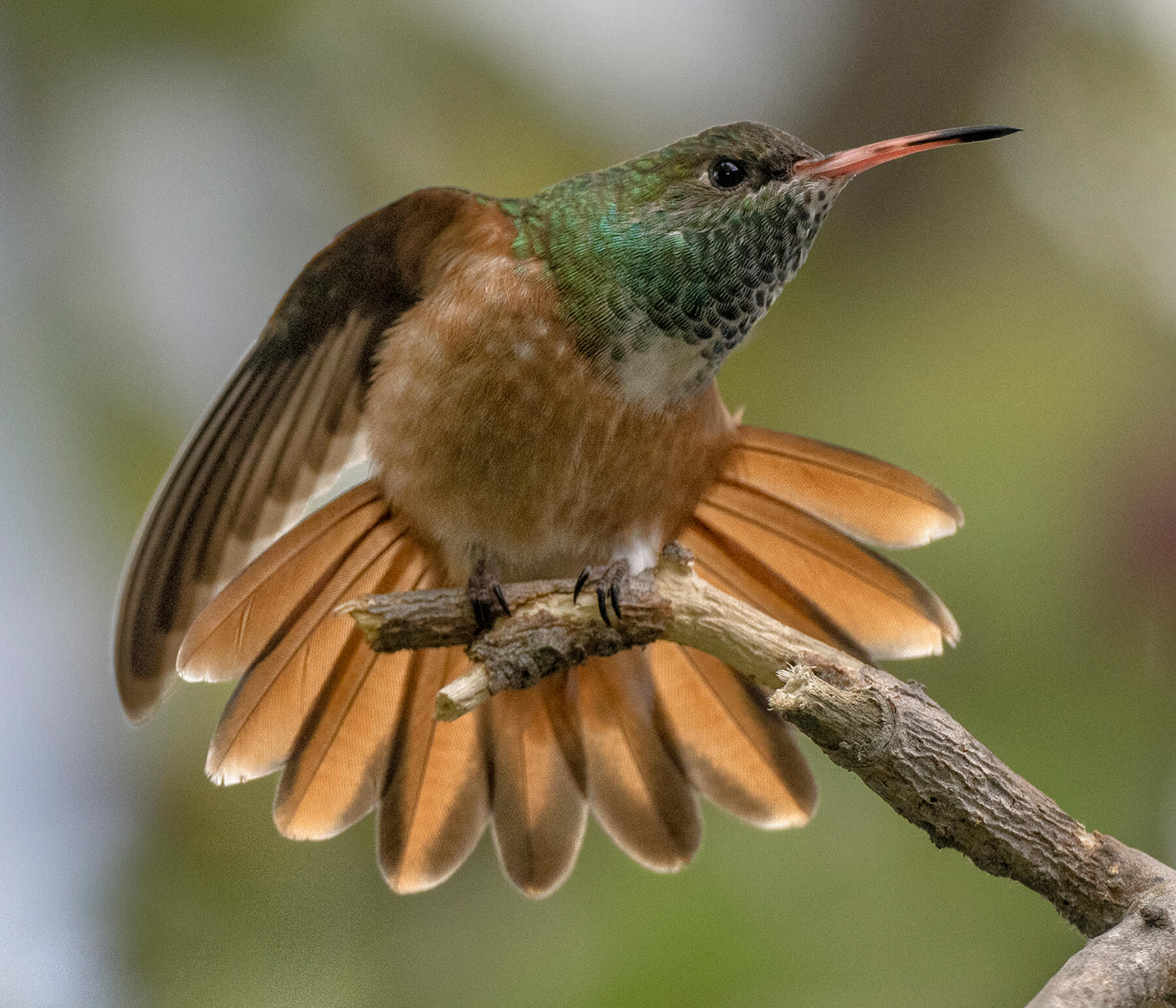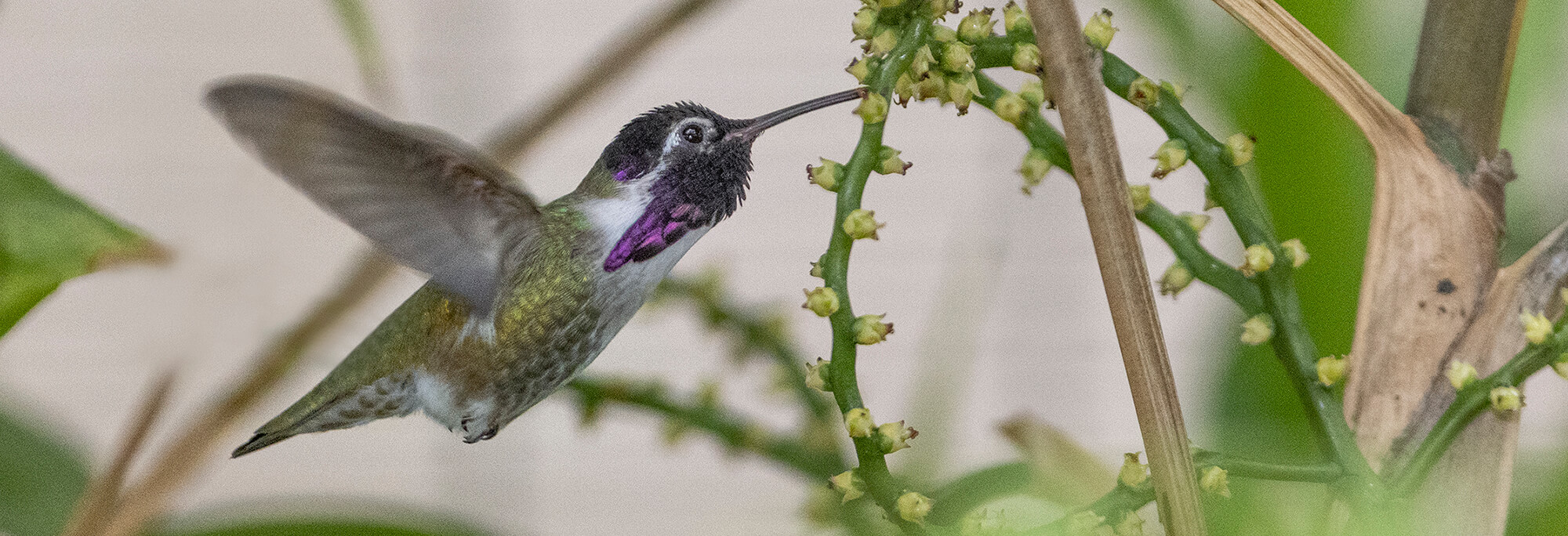
The World of Hummingbirds
Found in ranges from Argentina to Alaska, deserts to rainforests, hummingbirds zip around like tiny, winged jewels. So colorful are these birds, some of their common names include descriptors such as “ruby-throated,” “sapphire-vented,” and “green-crowned.” But along with being eye catching, hummingbirds are efficient, speedy aviators that play an important role in their ecosystem—that of pollinator. There seems to be little that these quick little birds can’t do—besides walk. Their unique characteristics and habits are certainly worth more than a quick look.

Sizing Them Up, Sorting Colors
The hummingbirds’ Family, Trochilidae, counts among its members the smallest bird in the world, Cuba’s bee hummingbird Mellisuga helenae, which is only 2.4 inches long. Even the largest species, the giant hummingbird Patagona gigas, is only slightly longer than a standard #2 pencil at 8.6 inches.
Hummingbirds come in all colors of the rainbow, and some of their feathers actually change color as they move in the light. Most hummingbirds are colored in shades of blue and green, with the male being much brighter than the female; after all, she has to blend in to her nest while incubating eggs. And a male’s flamboyance may help him attract a mate and keep his home—bright, shiny feathers may be one indication of health and fitness. When defending his territory, a male tries to stand out as much as possible by flashing iridescent feathers on his throat, head, tail, or back. Hummingbird eyes are sensitive to ultraviolet light, so colors may appear even more vibrant to them than to they do to us. As with many other wildlife species, the beauty of hummingbirds led to unfortunate actions by humankind: in the mid-1800s, for example, hundreds of thousands of hummingbirds were killed for their feathers, and some almost became extinct. Luckily, most people today realize that the feathers look much better on the birds. Native predators still keep these little birds on alert. Hummingbirds have been caught by dragonflies, trapped in spiderwebs, snatched by frogs, eaten by other, larger birds, stuck on thistles, and even captured by preying mantises.

Travelers Built for Speed—and Sipping
The 300-plus species of hummingbird are found only in the Americas. Some live in the high altitudes of the Andes Mountains, where they encounter frost and snowfall. When it’s especially cold, the birds go into deep torpor, which means their body temperature lowers and metabolism slows to conserve energy. In torpor, they appear completely asleep. Other species are found in cool and dry grasslands, forest lowlands, tropical rainforests, and even deserts. Many hummingbirds routinely migrate 500 miles (805 kilometers) or more every year. The rufous hummingbird Selasphorus rufus migrates an impressive 3,000 miles (4,828 kilometers) from Mexico to Alaska, where it breeds during the summer.
The name, “hummingbird,” refers to the humming sound these birds make with their tiny, beating wings; each bird sounds different, , depending on the speed of its wing beats. In the Caribbean, people call the hummingbird el zunzun. Hummingbirds predate pretty much any point of reference—hummingbird fossils found in Germany are said to be more than 30 million years old.

While their small size may seem indicative of flying speed and maneuverability, the hummingbird’s aerodynamic dominance also has much to do with its physiology. Like other birds, hummingbirds have hollow bones and fused vertebrae and pelvis, but they also rely on their birdy “brawn”—25 percent of their body weight is in their large chest muscles and sternum—when winging through the wild blue yonder. Add to that their flexible shoulder joints that allow for 180-degree wing rotation, and the result is a superior flight plan, with some species reaching speeds of more than 90 miles (145 kilometers) per hour. Like a helicopter, a hummingbird can go up, down, sideways, backward, and even upside down! When hovering, the wings turn in opposite directions and then reverse themselves in a figure-eight movement. A hummingbird’s efficiency is flight-focused, however—their short legs and small feet aren’t suited for ground travel, and walking is almost impossible.
Hummingbird bills are also well suited for specific needs. Long and slender, the bill is adapted to collect nectar from flowers. It protects the bird’s long, split tongue and enables each kind of hummingbird to feed from specific types of flowers. Hummingbirds are nectivores—about 90 percent of their diet is the nectar from flowers. And as anyone with a hummingbird feeder in their yard can attest, these little birds are frequent fliers—or diners. They are feeding a need—for fuel. Given their metabolism, it’s estimated that a hummingbird needs to eat every 15 minutes. Even though hummingbirds are small in size, they have a large appetite. They get plenty of exercise with all that zipping around just to get from sip to sip. These petite birds consume between 3.14 and 7.6 calories a day. And because they hover and sip, they keep beating their wings and burning calories even as they eat. Insects and spiders make up a smaller part of their diet. A hummingbird “hawks” insects by flying and diving to snap them out of the air.

Take a Little, Spread a Lot
While hummingbirds do flit from flower to flower and plant to plant, they’re not just filling their bills—they’re helping the ecosystem. Thousands of plants native to the Americas rely on hummingbirds for pollination. Hummingbirds gravitate toward flowers that are bright and are open during the day, when the birds are awake. They get most of their nectar from tubular blossoms, the perfect shape to accommodate their long, slim beak and tongue. Some have a bill perfectly adapted to very specific nectar-bearing flowers; for example, the long, curved bill of a buff-tailed sicklebill Eutoxeres condamini matches the curve of Heliconia flowers. Since they don’t have a strong sense of smell, hummingbirds are not attracted by fragrance. They do see in color, and it’s easy for them to see red, so they’re often drawn to red flowers, which many nectar-consuming insects can’t see. Hummingbirds also have the ability to hover around downward-hanging blossoms where bees and other insects can’t find a landing spot. And with every visit to every plant, pollen rubs off on the hummingbird, and is taken to the next blossom, furthering the pollination cycle.

Hummingbirds at the Zoo
San Diego County is home to five hummingbird species: Anna’s Calypte anna, Allen’s Selasphorus sasin, black-chinned Archilochus alexandri, rufous Selasphorus rufus, and Costa’s Calypte costae. In the San Diego Zoo’s new William E. Cole Family Hummingbird Habitat, guests can observe Anna’s and Costa’s hummingbirds, along with emerald hummingbirds Amazilia amazilia, and other avian wonders. “This is, by far, the best habitat we have ever built for hummingbirds and other neotropical birds,” says Dave Rimlinger, curator of birds for San Diego Zoo Wildlife Alliance. And there will be nectar and pollen sources for all.
(Top photo: Ken Bohn/San Diego Zoo Wildlife Alliance photographer)




